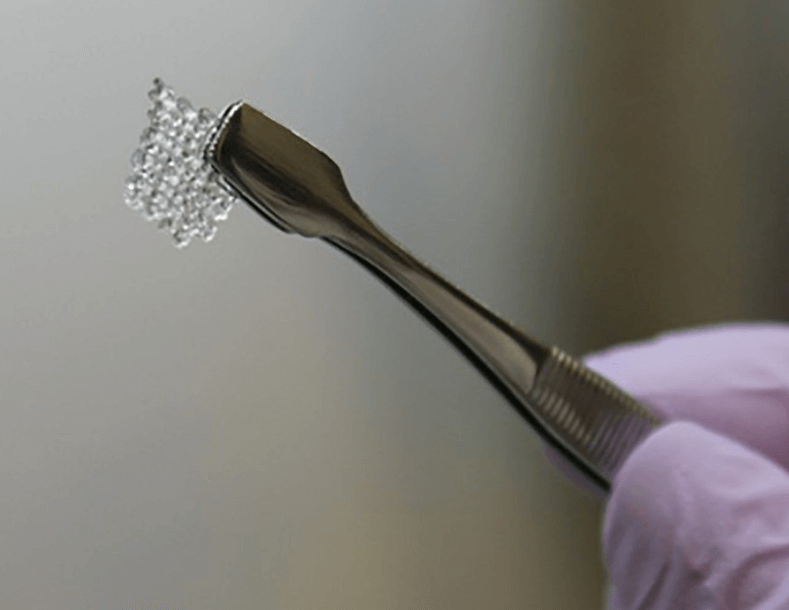The final aim of 3D printing organs is to meet the needs of any patient and now we’re closer than ever before. Though it still isn’t routine, a small number of lab-grown organs have been transplanted successfully in humans and there have been laboratories growing organs for decades. Recently announced in Nature Communications, scientists have discovered a new way to print ovaries. Mice with these ovaries can birth a live litter. With more work, they say, this form of 3D printing, or a similar technique, could help infertile women.
These printed ovaries are probably different than what you’re imagining. The new technique used by researchers starts by 3D printing a biodegradable scaffold to contain the cells. This structure, later on, breaks down in the mouse’s body. Next, the follicle cells—the parts of the ovary that usually produces eggs— are placed in the scaffold, which is then surgically implanted in the mouse. The female mouse with these new cells was able to ovulate and later birth live pups.
While the technique is pretty awesome, it isn’t entirely new. Implanted follicle cells leading to ovulation and live births have all been successfully recorded in previous studies. However, these past procedures involved a gel-like substance securing the cells instead of the 3D printed scaffold. Scientists hoped to prove that the printed scaffolds, which held the cells in a more stable environment, would ensure better survival of the follicles once inside the mouse.
According to Ramille Shah, co-author of the study and a materials science researcher at Northwestern University, that’s exactly what they did. The complex structure of the scaffold provided a secure base and the follicle cells fared significantly better inside the 3D printed architecture than with other techniques.
Although this is the first study, it does mean great things for future human in vitro fertilization. Scientists must still carry out a number of similar studies before human testing can begin. They have yet to determine how long these ovaries can survive in the body or if they will continue working over a lifetime, a highly desirable outcome according to Shah. Researchers hope a technique like this could be helpful to women with a certain type of infertility, for example, a childhood cancer survivor whose ovaries were damaged by their previous medical treatments. In the meantime, this study is an immense aid and indicator for other researchers, allowing them to improve upon the technique and increase its effectiveness for future use.
Related Links;
- New 3D printed “ovaries” enabled mice to give birth to live young
- A bioprosthetic ovary created using 3D printed microporous scaffolds restores ovarian function in sterilized mice
More News to Read
- First Stop: the Moon, Second Stop: Mars
- Google’s New Artificial Intelligent Chip and Supercomputer are Ready to Kick Butt
- What Instruments Would You Want With You On a Mission to Europa?
- How to Ensure Your Laptop Battery Dies Less Often
- Are These Mini Spherical Reactors the Answer to Fusion Energy’s Problems?











